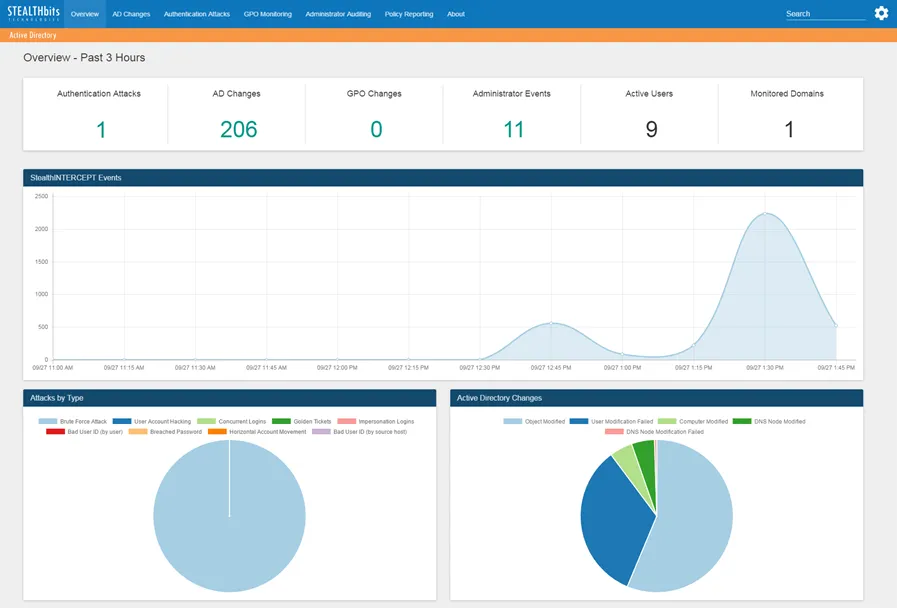Active Directory Permissions Analyzer Solution
The Access Analyzer Active Directory Permissions Analyzer Solution enables organizations to easily and automatically determine effective permissions applied to any and all Active Directory (AD) objects. AD, Security, and Network Administrators can easily browse and compare information from individual or multiple domains using comprehensive, preconfigured analyses and reports focused on permissions associated with AD domains, organizational units, groups, users, and computers. These capabilities enable them to obtain the most authoritative view of who has access to what in AD.
The Active Directory Permissions Analyzer Solution is located within the Jobs > Active Directory Permissions Analyzer Job Group, which identifies permissions applied to computers, groups, organizational units, and users.
Supported Platforms
- Windows Server 2016 and later
- Windows 2003 Forest level or higher
NOTE: See the Microsoft Windows Server end of support and Microsoft 365 Apps article for additional information.
Requirements, Permissions, and Ports
See the Domain Target Requirements, Permissions, and Ports topic for additional information.
Location
The Active Directory Permissions Analyzer requires a special Access Analyzer license. It can be installed from the Instant Job Wizard, see the Instant Job Wizard topic for additional information. When purchased separately, the Permissions Analyzer Solution is installed into the Jobs tree with the Active Directory instant solution. The license limits the solution to just the Jobs > Active Directory Permissions Analyzer Job Group. Once installed into the Jobs tree, navigate to the solution: Jobs > Active Directory Permissions Analyzer. The 0.Collection Job Group collects the data. The other job groups run analysis on the collected data and generate reports.
Job Groups
The Active Directory Permissions Analyzer Solution is designed to provide visibility into Active Directory permissions applied on all objects. Key information includes who can reset user passwords, who can modify group membership, and who can replicate domain information.
The jobs which comprise the Active Directory Permissions Analyzer Job Group use the ADPermissions Data Collector and the PowerShell Data Collector to return advanced security permissions and process analysis tasks and generate reports. The collected data is then available to the Netwrix Access Information Center for analysis.

The job groups and jobs in the Active Directory Permissions Analyzer Solution are:
- 0.Collection Job Group – Collects all Active Directory permissions information from the targeted domain
- 1.Users Job Group – Reports on all Active Directory permissions applied to user objects within the targeted domains
- 2.Groups Job Group – Reports on all Active Directory permissions applied to group objects within the targeted domains
- 3.OUs > AD_OUPermissions Job – Reports on all Active Directory permissions applied to organizational unit objects within the targeted domains
- 4.Computers Job Group – Reports on all Active Directory permissions applied to computer objects within the targeted domains
- 5.Open Access > AD_OpenAccess Job – Reports on all Active Directory permissions granting open access within the targeted domains. Open Access can be defined as access granted to security principals such as: Domain Users, Authenticated Users, and Everyone.
- 6.Broken Inheritance > AD_BrokenInheritance Job – Reports on all locations within Active Directory where inheritance is broken within the targeted domains
- 7.Containers Job Group – Reports on all Active Directory permissions applied to container objects within the targeted domains
- 8.Domains Job Group – Reports on all Active Directory permissions applied to domain objects within the targeted domains
- 9.Sites Job Group – Reports on all Active Directory permissions applied to domain objects within the targeted domains
- AD_ShadowAccess Job – Finds shadow access that leads to compromise of a domain or sensitive data. Attackers can chain vulnerabilities to escalate privileges from a non-privileged user to administrator with only a few steps. This job generates the shortest path between every non-privileged user to a domain administrative group, total domain compromise, or access to sensitive data.